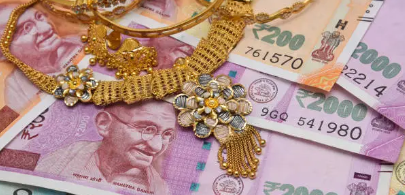
Gold has once again proven why it’s called the safe haven of investments. On Friday, June 13, gold prices in India breached the ₹1 lakh mark per 10 grams for the first time ever on the Multi Commodity Exchange (MCX), leaving investors stunned and market watchers scrambling for answers. This marked a historic moment in Indian commodity markets, as gold opened at ₹99,500 per 10 grams on Friday, up from Thursday’s closing price of ₹98,392. As the day progressed, it touched an all-time high of ₹1,00,143 per 10 grams, reflecting a sharp 1.12% jump within a matter of hours.
What triggered such a dramatic rise in gold prices? The primary reasons are a mix of rising geopolitical tensions, economic data from the United States, and aggressive buying by central banks. The first and most immediate cause is the growing instability in the Middle East. On the night of June 12, Israel launched targeted airstrikes on Iran’s nuclear and military facilities. This action shocked the global community and fueled fears of a broader conflict in the region. In such times of global uncertainty, gold becomes the go-to asset for investors, who prefer its perceived safety over riskier investments like equities. The resulting spike in demand pushed prices higher. Moreover, Iran’s threats of retaliation have only intensified investor anxiety, further driving interest in gold.
Another important factor contributing to this rally is recent inflation data from the United States. The newly released figures showed that inflation was lower than expected, which in turn raised hopes that the US Federal Reserve might soon cut interest rates. Lower interest rates make gold more attractive as an asset because it does not yield any interest, making it more competitive against fixed-income instruments. This economic expectation has fueled additional demand for gold in global markets, including India.
So where are prices heading from here? Several global financial institutions have offered their forecasts. Bank of America believes that gold could reach $3,000 per ounce within the next 12 months. Meanwhile, Goldman Sachs is even more optimistic, projecting that gold could hit $3,700 per ounce by the end of 2025 and may even touch $4,000 by mid-2026. One of the reasons for this bullish outlook is the consistent and heavy buying of gold by central banks, especially by nations like China. These countries are diversifying their reserves and increasing their gold holdings, putting upward pressure on prices.
Interestingly, despite the Israel-Iran conflict, Goldman Sachs suggests that oil supplies from the Middle East may not be severely disrupted. However, they maintain that the demand for gold will continue to remain strong due to the ongoing volatility and geopolitical stress. Gold, they say, will continue to shine even if oil markets remain stable.
Market experts have also issued some advice for investors in this environment. Those who already own gold are being encouraged to hold onto it, as the medium- to long-term outlook remains strong. For new investors looking to enter the market, experts suggest taking a systematic approach—buying small amounts over time rather than making large, one-time purchases. This strategy helps mitigate the risks posed by short-term fluctuations and price corrections, which are still possible given the uncertainty in global markets.
In conclusion, gold's recent rally to ₹1 lakh per 10 grams is a reflection of both global fear and economic recalibration. As long as tensions in the Middle East persist and inflationary trends influence central bank policy, gold is likely to remain in high demand. However, investors should stay cautious and informed, as markets are expected to remain volatile in the near future.
Disclaimer:
This article is for informational purposes only and should not be considered as financial advice. Market investments are subject to risks. Please consult your financial advisor before making investment decisions.




